8 Easy Plant Care Elements for Success
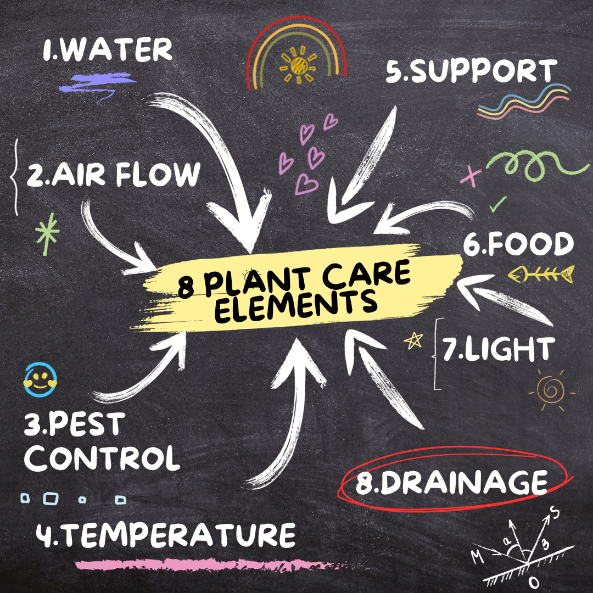
Easy Plant care elements
We supply care sheets with our plant orders, our Newbie care sheet covers the most important aspects of plants care, with several other sheets available for varieties that have care requirements different to the Newbie care sheet. See the care sheets HERE before your plants arrive, or receive them with your plants.
Below are the fundamental requirements for all indoor plants, you must provide all of these for long term health and well-being of your plants.
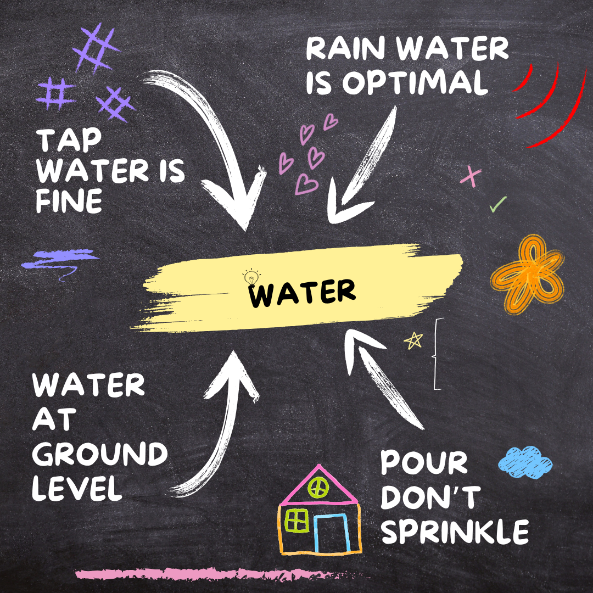
1. Water
All plants need water to survive, some more than others, normal tap water is fine, rainwater is better. In an indoor environment we do not recommend water on the leaves as this leads to fungal problems if the water sits there for too long (when there is not enough ventilation).
Water well (about 300ml per normal 140mm pot) do not sprinkle water scantly, this does nothing for the plant.

2. Food
We use and recommend Osmocote® slow-release fertilizer, with any fish and seaweed liquid fertilizer every 6-8 weeks (less in winter)
There are many gimmicky plant foods on the market, we have found these to be effective only in the short term (something like energy drinks for people) Please be aware that gimmicky liquids of any kind cannot compare to worldwide recognised brand name fertilizers.
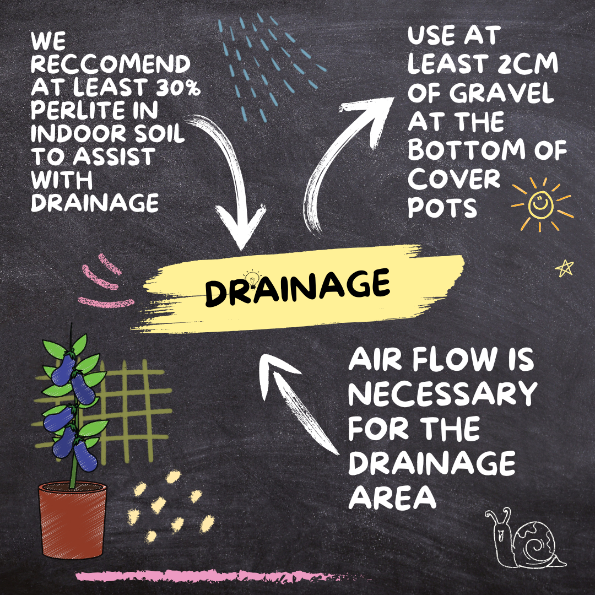
3. Drainage
Drainage works in 2 ways, firstly the soil must be easy draining and secondly, the pots must be capable of draining the liquid that the soil is releasing, cover pots MUST have at least 2cm of gravel at the bottom to facilitate drainage.
Soil must be at least 30% Perlite.
All pots must have drain holes if you would like your plant to live a long time. A plant may live for a short time without drain holes in the pot, it will then die from rot. Air flow is necessary at the area where the pot is draining as well to ensure that water is completely moved on.
We also do not recommend Hydro for long term results.
POT SIZE MATTERS! Ask us if you are not sure, the area around the plant roots needs to be the right proportion according to its drainage needs - sounds complicated? it's not really, but it can make a big difference to drainage, and ultimately, the health of your plant. As a rule do not go more than one width of the root ball on either side of it, and two widths below.
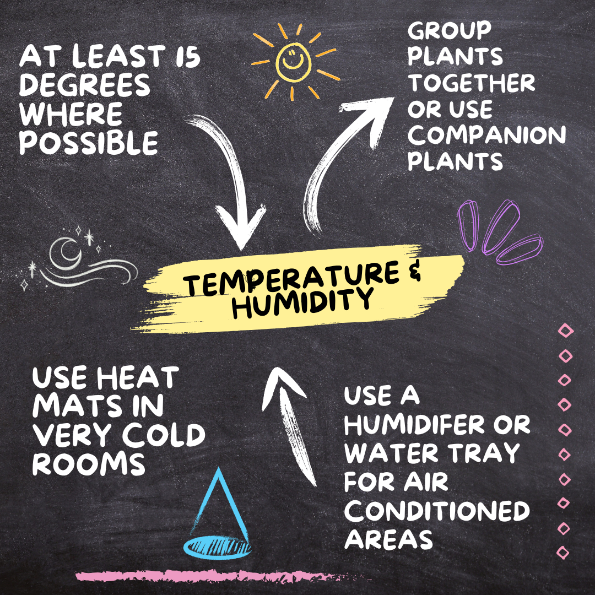
4. Temperature and Humidity
Most plants do their best at over 15 degrees, most indoor plants can live all year round in normal “house ambient” temperatures.
You may find that baby plants will do well in a terrarium in winter, and when air conditioning is used (for hot or cold), that you will need a humidifier or water dishes.
If you like your house particularly cold, you can invest into some heat mats for some species or consider a plant cabinet for best results.
Companion plants (very leafy large plants) can be used near smaller plants to provide humidity.
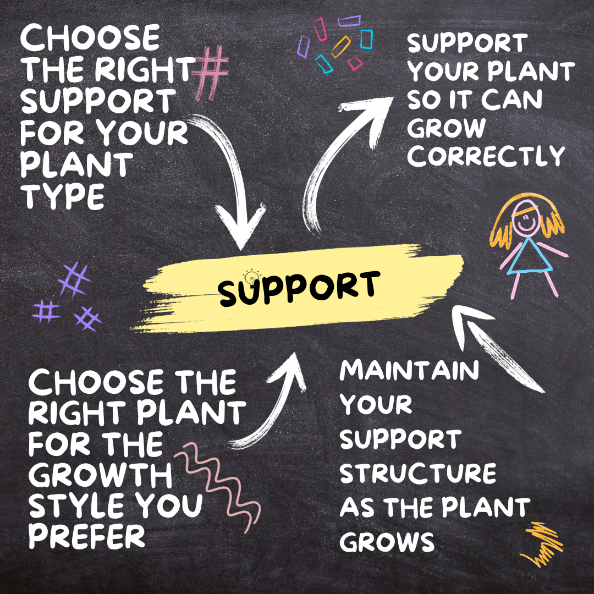
5. Support
There are 2 things to consider here, firstly, you may prefer your plant to be in a hanging pot and trailing down, if this plant needs support and you want it to trail, it will grow a lot slower and may eventually die off as it can no longer use the energy required to hold itself up. If you are unsure of the species and how it should be grown, please ask us, you may need to consider a different plant for you preferred pot, area, or style.
The second thing to consider is the type of support, with so many on the market, it is hard to know which one is right for your plant, please ask us and we can advise you on the best option, as different species attach differently to growth supports.
It is important to also note that you should keep an eye on the support structure and extend it or change it as the plant grows.
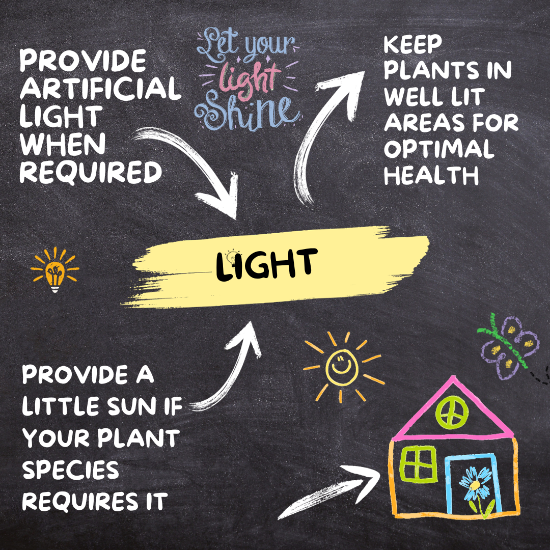
6. Light
Most plants require good light, this means there should be windows nearby, depending on the species, you may need to provide some artificial plant lights. Sun is not the same as lights, please check your species and if they like some sun, please provide this to keep them alive in the long term, most plants like a bit of morning sun, even on a cloudy day.
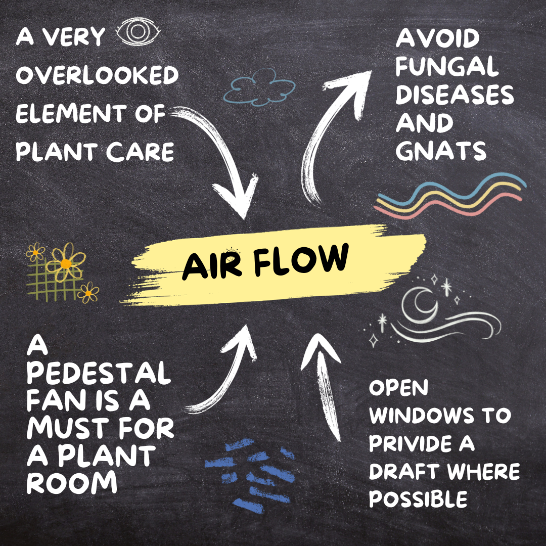
7. Air Flow
This is generally overlooked by many indoor plant enthusiasts and causes a lot of problems with fungal issues and gnats; it can also affect water absorption. Generally, if you have a plant room it is ideal to have a pedestal fan working gently 24/7. You can work around this by opening windows to create a draft.
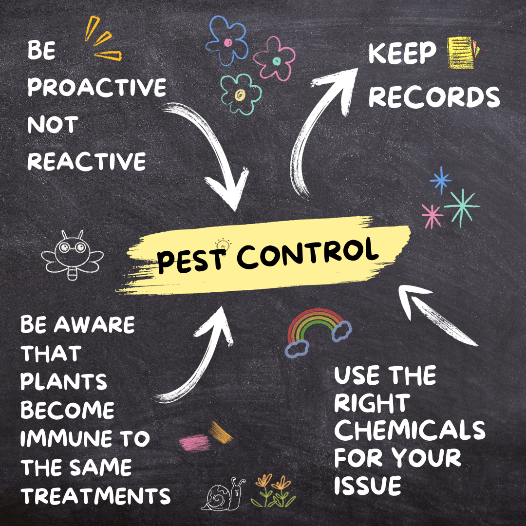
8. Pest control
Pest control is something that most people handle reactively and not proactively (you deal with a problem when it arises), we recommend a regimen of pest control, we have small scale chemicals available, and we provide a chart and labels that can track plant care with regards to food and pest control.
Please be aware that pests build up immunity to the same chemicals being used repeatedly.
We are always here to help you with your plant care needs.
